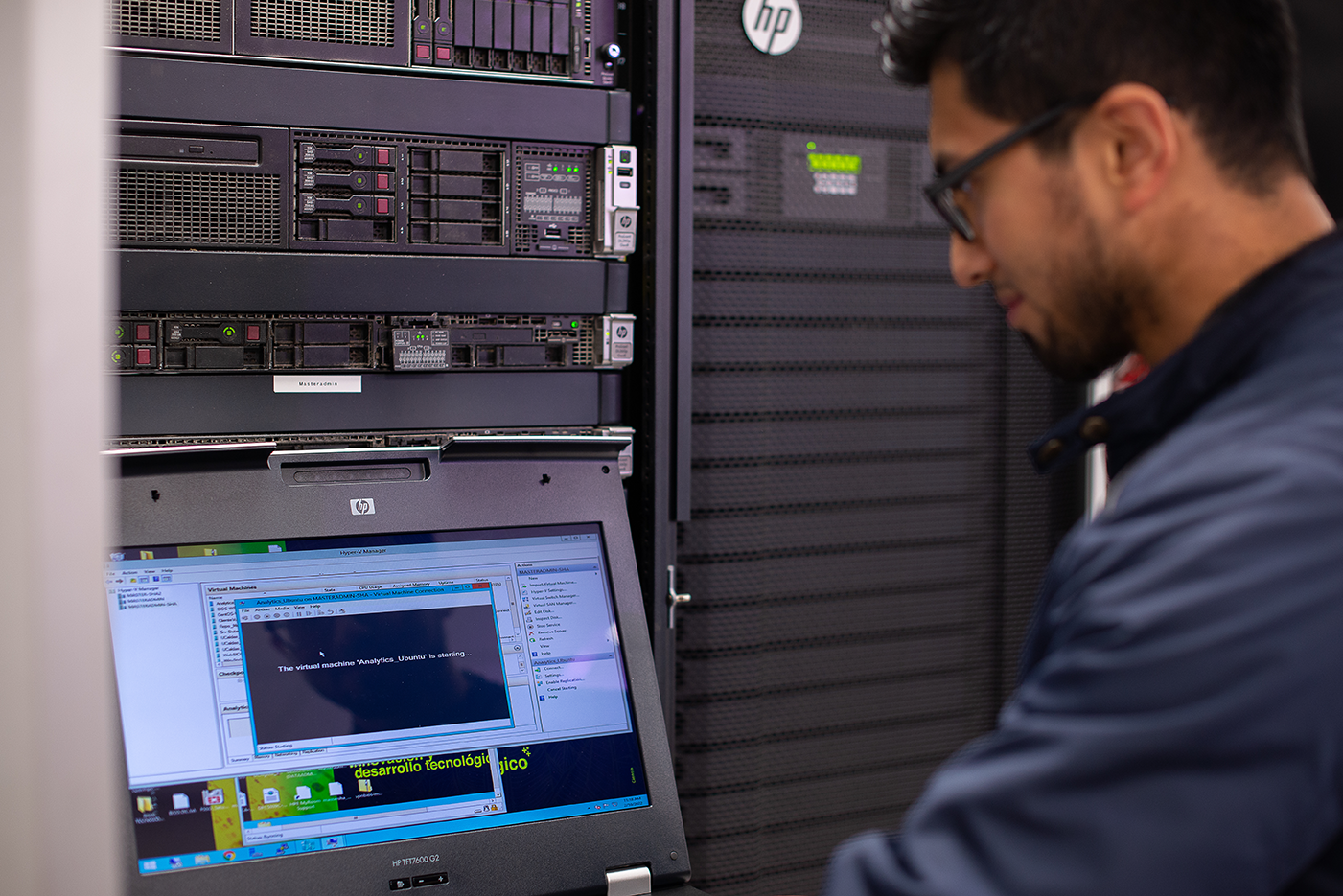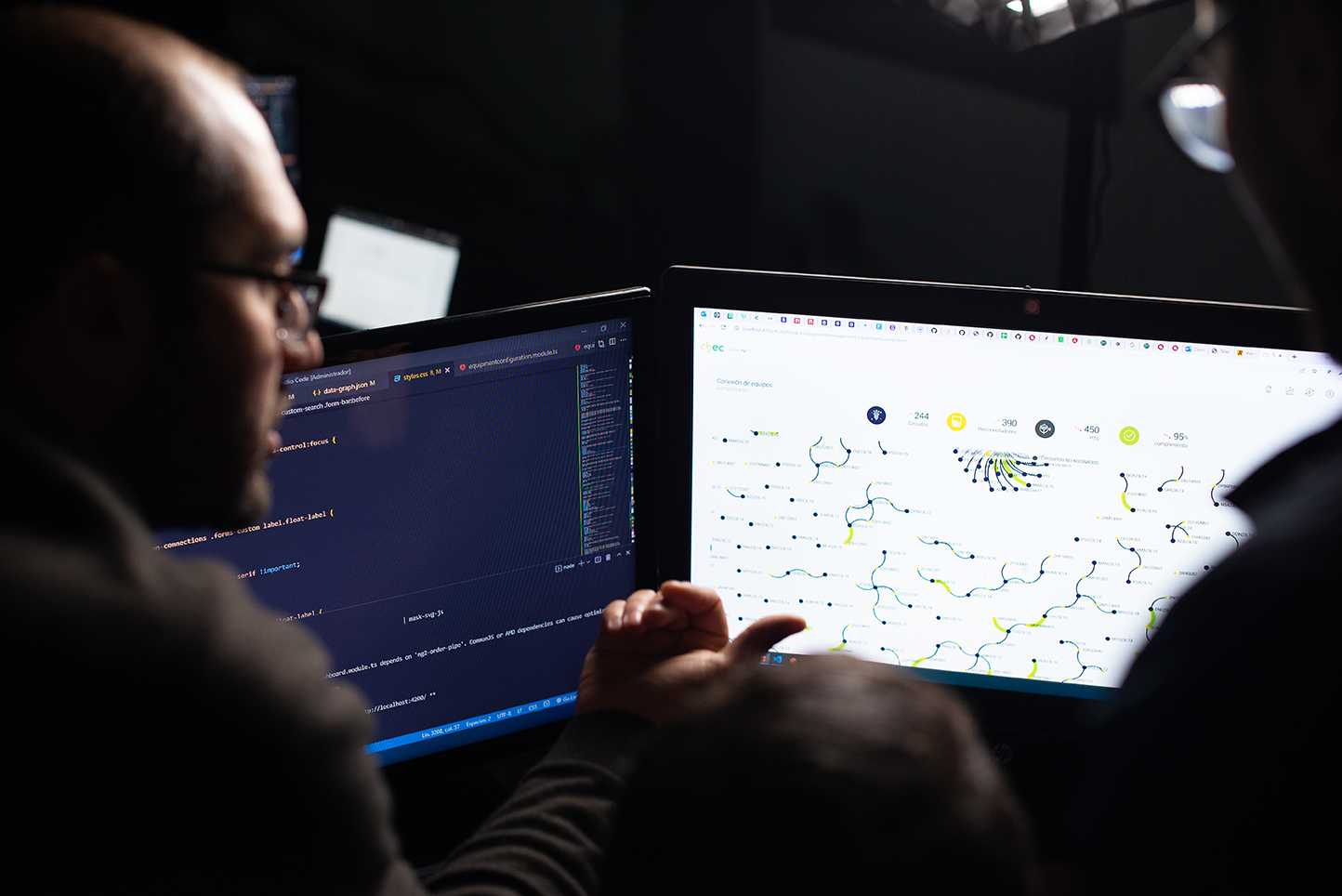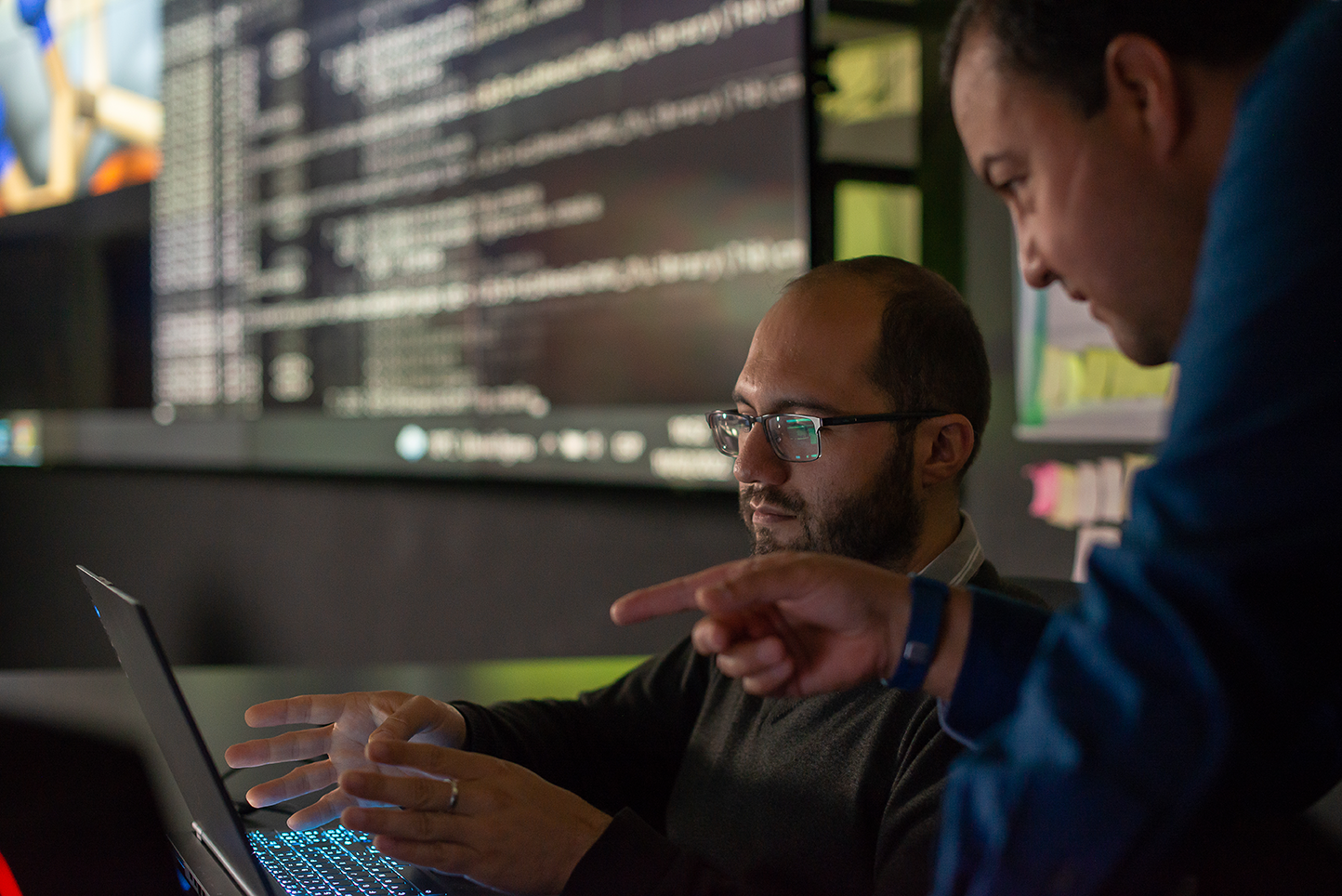Infrastructure

Our capacity
With Colombia's entry into the Organization for Economic Cooperation and Development (OECD), the country committed itself to ensure and guarantee socioeconomic benefits for the population based on scientific and technological advances, as a fundamental strategy to achieve sustainable development. This implies promoting and strengthening open science and computational capacity that facilitates storing, processing, analyzing and interpreting data to generate new knowledge. In this regard, the country has established guidelines for data exploitation through CONPES 3920 National Policy for Data Exploitation (Big Data), which arises from the imminent wave of data being produced. Within the framework of this CONPES, the Government recognizes the supercomputing capabilities of BIOS, which were installed seeking to leverage projects that drive the country's progress.
BIOS is the only Center of its kind in the country with supercomputing infrastructure provided by the National Government (represented by Mintic and Miciencias) in alliance with the country's universities and technological allies such as Microsoft.
This technological capacity has allowed BIOS to deploy research and innovation projects focused on advanceddata analyticscovering three dimensions: economic, social and environmental, applied in companies and organizations aligned with the fourth industrial revolution. For this, emerging technologies are used such as: bigdata, Data Science, Blockchain, Machine Learning, IA, IoT, which allow extracting value from data in 3 approaches:
Descriptive: How the data behaves.
Predictive: How the data will behave according to historical data.
Prescriptive: How can I influence the behavior of the data. Prescriptive analyses determine the ways in which business processes should evolve or be modified.

Visualization wall
The scientific information visualization wall is one of the most advanced scientific research tools in Latin America. It consists of 32 full HD screens that together provide a resolution of 66.3 megapixels and can also be controlled in 3 different ways.
Through a Tablet or Smartphone
Through Kinect type devices
Through an Emotiv EEG interface
This project was possible thanks to the management of resources from the Caldas Bio-region royalties project, executed by the Government of Caldas, of which BIOS is the operator. The Center's research team is currently working on human-machine interface applications, gene analysis through the use of pipelines and flowcharts, in addition to the analysis of diagnostic medical images and Molecular Docking processes; however, the uses of the visualization wall are of wide spectrum and fields of action. It has two modes of operation:
By means of a video server for collaborative work that allows distributing different image sources throughout the visualization area.
Direct connection to graphic processing nodes that will allow processing and visualization of high complexity in real time (in process of implementation).

Biotechnology tools
JBrowse
BIOS has implemented within its server a version of the popular genomic sequence viewer Jbrowse, in order to allow the user to view its annotation results dynamically on a web page.
ZYFCON
Today, large amounts of data are generated through new sequencing technologies, and experiments involving gene and protein analysis. However, much of this data remains uncharacterized, even though the correct annotation of enzymatic functions is critical for the reconstruction of metabolic networks. ZYFCON (enZYme Function prediction COmbining Networks) is a tool designed to predict enzymatic functions in sets of coding genes from whole genome sequence data.
https://github.com/andquintero/ZYFCON